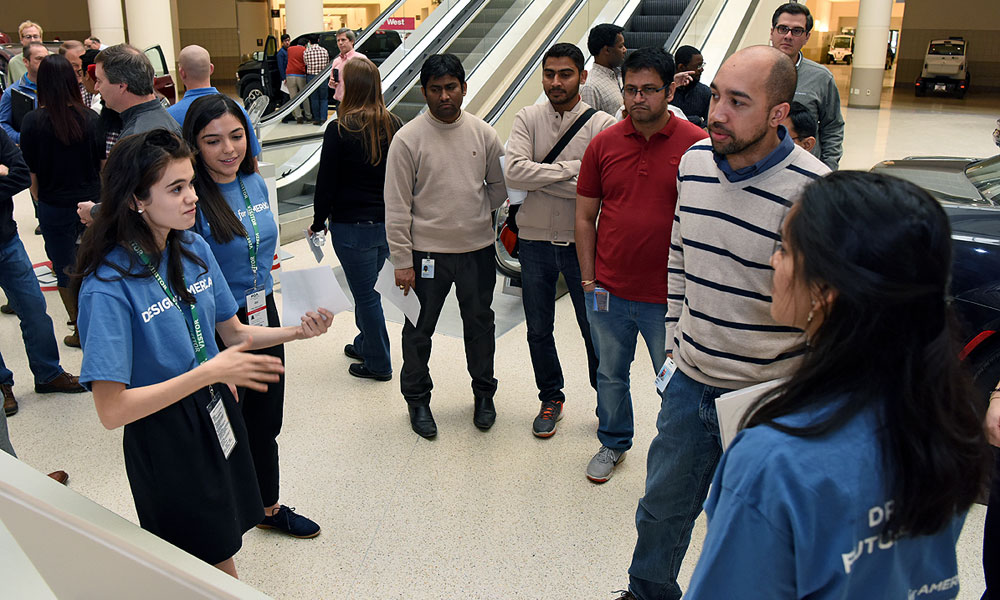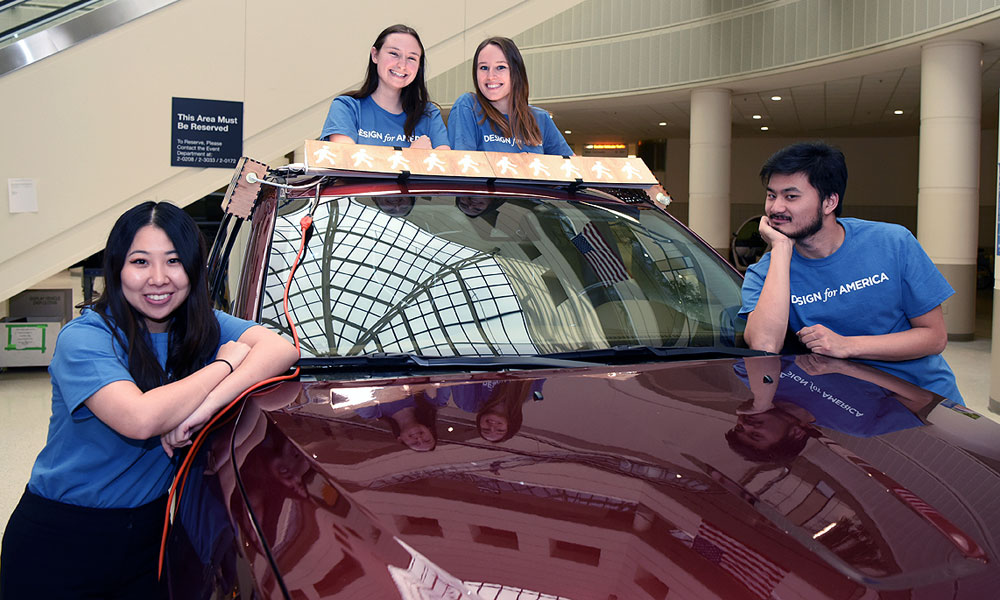Navigating the transition to automated driving is challenging – the sensing capabilities of vehicles needs to increase dramatically, while drivers need to adapt years of experience to sharing the road with data-controlled cars.
With automated driving technologies still in the early stages of development, today’s younger drivers are at the center of the transformation. This makes their ideas important.
FCA US and Design for America partnered on a national project to let engineers connect with five groups of college students. The teams spent several months exploring the issues around the topic “Safety for All in The Transition to Self-Driving,” including monthly web conferences with FCA mentors. This is the fifth year FCA partnered with Design for America.
“This challenge was high difficulty, high excitement, which is often the things that work best for our group,” said Liz Gerber, faculty founder of Design for America, which got its start at Northwestern University in Evanston, Illinois. “They realize that the shift to automated driving is a real problem, it’s a really hard problem and it’s coming soon.”
Looking for fresh thinking
The student teams selected for the FCA challenge were:
- Michigan State University, Lansing, Michigan
- University of Notre Dame, South Bend, Indiana
- Rice University, Houston, Texas
- Rensselaer Polytechnic Institute, Troy, New York
- University of Illinois, Champaign, Illinois
The project culminated in early February when the teams traveled to the FCA US complex in Auburn Hills, Michigan. The 24 students spent two days presenting their findings and displayed prototypes of their proposed solutions on Jeep®, Chrysler and Ram vehicles in Tech Plaza.
“Design for America is one of those initiatives where we get a lot of new, fresh thinking,” said Partha Datta, director of vehicle integration and validation and a program mentor. “These teams have solutions to the same issues we look at but they come from the next generation of engineers and psychologists, approached from a very different vantage point.”

Design for America team members presented their automated-driving safety ideas to FCA employees with displays in Tech Plaza.
The Design for America team proposals:
- Rice University: Crosstalk, a roof-mounted light system that let pedestrians know the automated driving vehicle had detected them and it was safe to cross the street, replacing eye-contact cues from a driver.
- Michigan State: Hindsight, rear-mounted indicator lights to let drivers know when they are near an automated driving vehicle and cautioning if following too close.
- University of Illinois: Look Up!, a steering wheel-mounted tablet designed to minimize driver distraction and maximize focus on the road.
- Notre Dame: A combination visual (Luna), audio (Fiona) and tactile (Senz) alerts that can be customized at the dealership when the vehicle is purchased.
- Rensselaer Polytechnic Institute: Right Hand Man, a notification system for public transit vehicles that uses traffic data to trigger visual and audio warnings in situations where the driver needs to intervene and exercise caution.
“Our team is truly interdisciplinary — sociology, mechanical engineering, architecture, cognitive science — so we had a ton of input and a lot of different perspectives,” said Maddie Bowen, team lead for Rice University. “At first we wanted to conquer the world, but then we scoped it smaller and looked at our Rice University community. We have a lot of pedestrians who rely on eye contact to get to and from school, and that’s a community we can have direct impact on.”
Team members said their real-world experiences with driving influenced the ideas and solutions they brought to FCA.
“We had to do a lot of self-reflection when we were behind the wheel,” said Adrianna Fazio, a member of the Notre Dame team. “I was actually in a minor accident this past summer, nothing too serious, but it definitely changed the way I drive and it made me realize that everyone has different experiences behind the wheel and we should cater to those, we should never try to put a square into a triangle shape.”
Preview a future career
There is another benefit to the partnership with Design for America: Students are exposed to FCA workers and culture, while FCA meets potential future employees.
It worked that way for Prateek Gupta, a Design Release – Body Electro Mechanical engineer who first encountered FCA four years ago as a Design for America team member at Michigan State.
“I think it is great that the design process that Design for America follows is part of something that I do every day in my job,” said Gupta. “When I did the Design for America project, the exposure to FCA really pushed me to want to be a part of Fiat Chrysler. Working with the mentors showed me that FCA really is all about innovation and human-centered design. That’s what really pushed me to apply and be part of the company.”
Design for America’s Gerber said the team visit to the corporate partner is a key part of the program.
“It motivates great work because they know they are actually going to be talking to real people who can actually implement some of these ideas, Gerber said. “In contrast, when they are in classes, they may present an idea but it’s just a professor rating them, not a real world professional who has the experience and expertise in their domain.”

The Design for America team from the University of Notre Dame proposed a trio of audio, visual and haptic alerts for drivers sharing the road with automated-driving vehicles.




